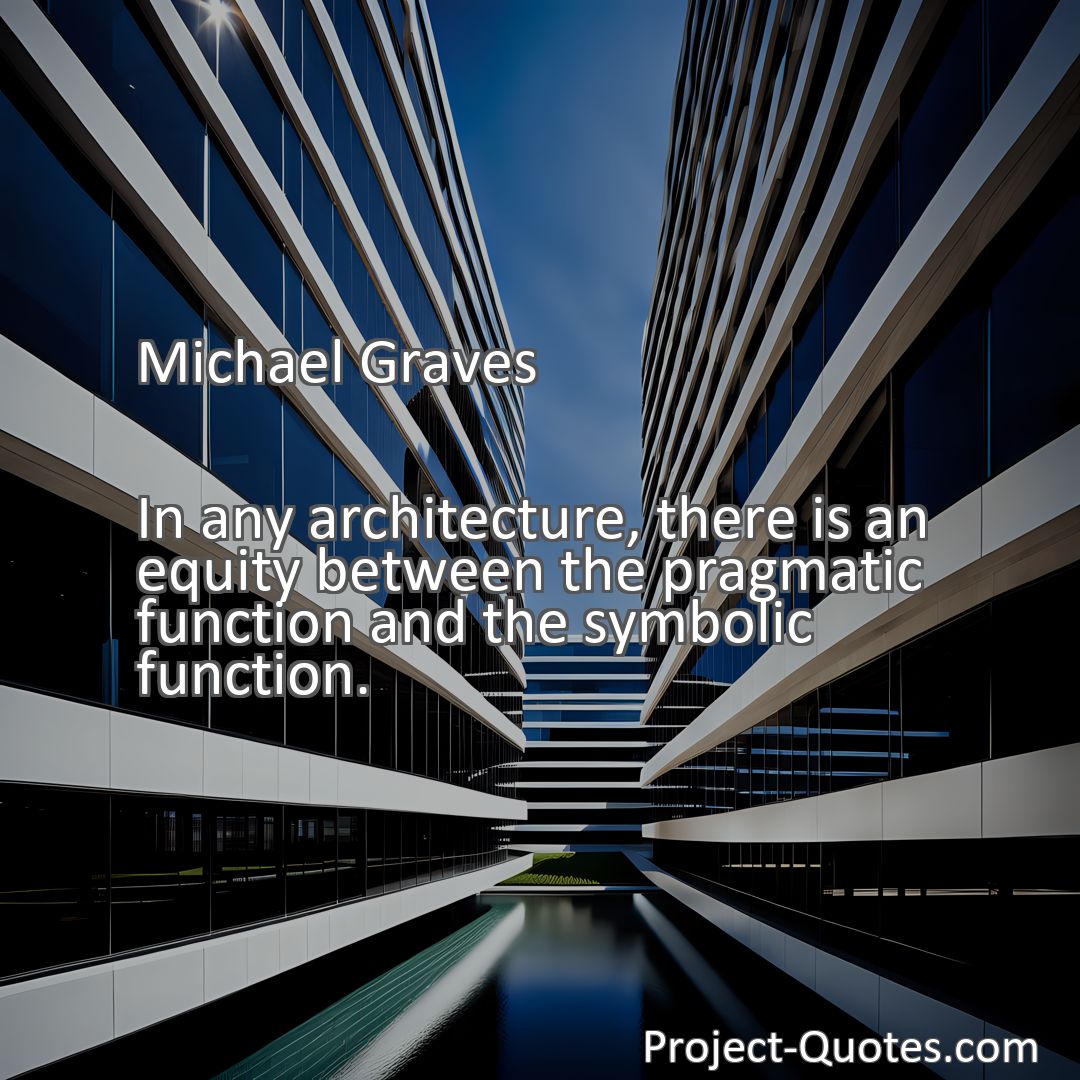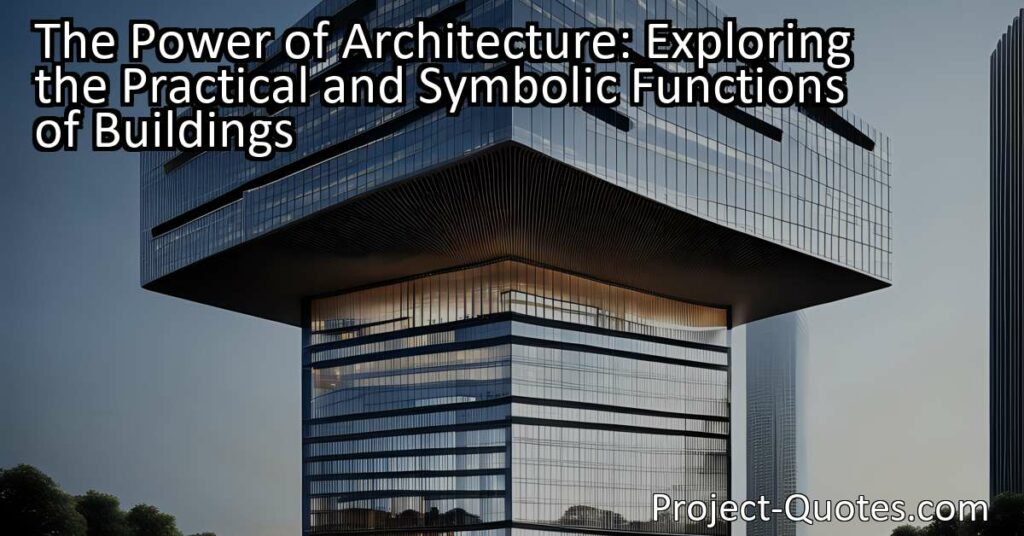In any architecture, there is an equity between the pragmatic function and the symbolic function.
Michael Graves
In “The Power of Architecture: Exploring the Practical and Symbolic Functions of Buildings,” we discover the fascinating blend of practicality and meaning in architecture. From homes to famous landmarks like the Eiffel Tower, buildings serve practical purposes while also symbolizing ideals and emotions. Architects carefully consider materials, design, and the environment to create spaces that tell stories and shape our experiences.
Table of Contents
Meaning of Quote – In any architecture, there is an equity between the pragmatic function and the symbolic function.
Architecture is an amazing mix of art and practicality. It’s like a painter deciding to make their canvas not just beautiful, but also a comfortable place for people to live, work, and play. When famous architect Michael Graves said, “In any architecture, there is an equity between the pragmatic function and the symbolic function,” he was speaking about this special blend that makes buildings so much more than walls and a roof. Let’s dive into this idea and understand how buildings are both useful and meaningful.
First off, let’s think about the pragmatic function, or basically, how the building is used every day. This includes all the practical things a building needs to accomplish. For example, a home provides shelter and comfort. A school is a place for learning and growth. Offices are the spaces for work and productivity. This practical aspect is super important because it’s all about making sure the building serves its primary purpose whether that’s keeping us safe from bad weather or giving us a place to make scrumptious meals.
But architecture isn’t just about being practical. It also has what Graves calls a symbolic function. This means that buildings can stand for certain ideas or values and can express creativity and culture. Just like a book is not only pages with words, but also stories that can make you cry or laugh, a building can be a symbol that tells a story or gives you a certain feeling.
Let’s use our imagination and think about some famous buildings we might know. The Eiffel Tower in Paris isn’t just a big structure made of iron; it has become a symbol of love and culture, representing the charm of France to the world. Then, there’s the White House in the United States. Beyond being the home and office for the President, it’s also a symbol of leadership and American history.
Even our local library has these two functions. On one hand, it’s a place filled with books where we go to read and learn. But it also could be a symbol of knowledge and a reminder of the importance of education in our community. The library’s architecture, with its big windows to let in light and its quiet, cozy reading corners, is designed carefully to be welcoming and encourage learning.
Architectslike Michael Gravesspend a lot of time thinking about both the practical use and the symbolic meaning when they design buildings. They consider how we move through spaces, how we feel in those spaces, and even think about what materials to use that can make a building sturdy and also beautiful.
Materials, by the way, play a big role in a building’s symbolism and function. A building made of steel and glass could give off a modern and cutting-edge vibe, showing that maybe its a place for innovation, like a tech company’s headquarters. On the other hand, a house of warm red bricks could give you a feeling of coziness and tradition, like a lovely nostalgic feeling about the place you call home.
When architects design a building, they’re basically telling a story. They decide what face the building will show to the street will it be welcoming with big windows and doors, or more private with a small entrance? They also think about the inside spaces. Is there a big open area where lots of people can gather and share ideas, or lots of little nooks for private moments? These choices help shape the experiences of everyone who walks through the doors.
Another important part of architecture is that it’s for everyone. Think of a park with paths for both jogging and walking calmly, where fountains and sculptures can be found. That park isn’t just green space; it can be a symbol of community and healthy living. It has been designed with multiple functions and meanings in mind to be enjoyed by everyone.
Architects also have to think about how a building fits within its environment. A skyscraper in the middle of a busy city is right at home, while it would probably seem completely out of place in a quiet countryside. Similarly, a cozy little cottage might look strange surrounded by towering city buildings. Architects work like artists, making sure their creation fits with the surroundings and adds to the story of the neighborhood or city.
Finally, while buildings start with an architect’s vision, they grow to become part of the people’s stories who use them. A school becomes filled with memories of that favorite class, that tough math test, or the friend made during lunch break. A house becomes a home, filled with laughter, family dinners, or maybe the pet that greets you at the door.
So when we back up and think about what Michael Graves said, it’s clear that architecture is a delicate balance. It combines the practical needs we have as people who use buildings every day with the deeper symbolic meanings that reflect who we are and what we care about. Next time you pass by a building or walk into a room, try to think about both what it does and what it stands for. Like a book that’s more than just pages, or a painting that’s more than just colors on a canvas, architecture has the power to serve and inspire us in many ways. It tells the tales of our lives and communities, framing the past and shaping our future.
I hope this quote inspired image brings you hope and peace. Share it with someone who needs it today!


